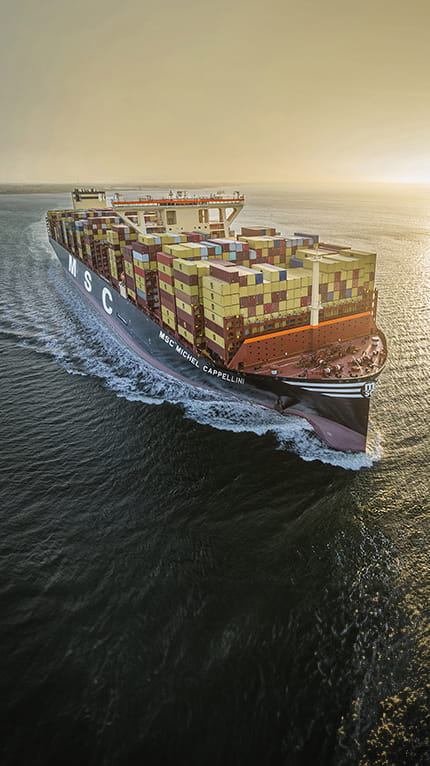Shipping Ships: A Deep Dive into the World of Maritime Logistics
Imagine a vast ocean, stretching endlessly, a highway for goods, dreams, and adventures. Across these waters travel ships, vital links in the global network of trade and commerce. Today, we delve deep into the fascinating world of shipping.
Understanding the Fundamentals of Shipping
- What is Shipping? Moving goods from point A to point B by sea.
- Why is Shipping Important? Connects countries, transports goods (even the ones you might not know about).
- Different Types of Ships: Cargo ships, tankers, cruise ships, container ships – each specialized for its task.
The Role of Container Ships
Source: msc.com
- Revolutionized Shipping: Efficient, larger and cost effective compared to traditional methods (smaller vessels).
- Containerization Impact: Streamlined processes for loading and unloading cargo (no manual labor involved!).
Advantages of Shipping with Containers
- Speed: (cargo reaches destination much quicker with standard packaging and method).
- Reduced Damage: Protecting fragile products from risks (shipped safer).
- Economy of Scale: Reduced price for mass delivery.
Disadvantages of Shipping with Containers
- High Costs: Initial price for investment in equipment and infrastructure (the shipping method costs more to start with than traditional means)
- Potential Problems: Issue in cargo load if loading incorrectly or the weather and the journey involved is too challenging.
Different Shipping Methods
- Dry Bulk Cargo: Raw materials, like iron ore and grains, need robust, durable ship.
- Liquid Bulk Cargo: Oil and chemical substances move in massive quantity (large tankers), a crucial method (for liquid material movement).
- General Cargo: Mix of items.
Shipping Ships, Key Players

Source: contentstack.com
- Ship Owners: Invest, operate (major role), manage the fleet.
- Shipping Lines: Link different ports, managing shipments and shipping, connecting everyone together.
- Freight Forwarders: (Crucial middleman) plan logistics, deal with customs, keep up to date with port rules (helpful service from local or foreign service companies).
- Port Authorities: Control port activities.

Source: nridigital.com
Navigating the Shipping Process
- Order Placement: Initiating a shipment with documentation (the paper and virtual processes are required to begin the delivery process).
- Choosing a Ship: Choosing appropriate ship, checking its size, capacity and routes to your destination.
- Customs & Import Procedures: Understanding and complying with international rules; checking tariffs; following specific rules or requirements (custom procedures, especially if importing and exporting globally).
Steps in Shipping a Container
- Packing and Loading: Preparing the goods inside containers; arranging them to make it sturdy; verifying weight, safety and volume requirements before shipment. (essential procedures).
- Shipment Confirmation: Receiving a detailed order receipt that has your order information and logistics detail and agreement details.
- Transport: Shipping across waters and docking safely in correct ports.
- Discharge and Unloading: The cargo (good to know they use specialized and trained crews for such work to maximize safety).
- Delivery Confirmation: Confirming the receipt of cargo.
Challenges of Shipping
- Weather conditions: Strong storms might affect cargo vessels, slowing them or even damaging their equipment or causing loss of cargo (high risk factor is bad weather events, sea damage, floods or severe weather).
- International shipping delays: Unforeseen situations can hold ships back, like unexpected breakdowns or delays during border customs/processes and bureaucracy, customs issues.
- Price Volatility: Rates fluctuate according to various factors – fluctuating and hard to forecast pricing on different cargos depending on route.

Source: 9gag.com
Shipping & Technology
- GPS tracking: Monitoring shipments location (critical and in real-time for better understanding)
- Automated Systems: Simplifying data management; improving order flow; handling communication better; enhancing port efficiency.
- Big Data Analytics: Analyzing trends, forecasting demand, predicting risks, improving resource utilization and minimizing logistical and inventory errors (enables precise analysis).
The Future of Shipping
- Electric & Hybrid Vessels: Minimizing the environmental impact, addressing rising need to make shipments more sustainable (a change towards electric or hybrid-fuel, emission-friendly cargo ships).
- Autonomous Navigation: Enhancing accuracy and minimizing human errors; also improving safety while addressing crew demands (crucial advancement expected in near future for efficiency improvement)
Costs Associated with Shipping
- Fuel Costs: (significant part), affect operational expenditure for long voyages.
- Port Fees: Vary from port to port, consider their usage for unloading cargo and the specific process required.
- Insurance: Essential coverage for shipments during voyages to prevent cargo or ships getting destroyed by fire, sinking or damage to cargo.
- Labor Costs: (essential component of final pricing), and maintenance on shipping crew.
- Equipment Costs: Costs of maintaining shipping equipment to improve accuracy, reliability, sustainability and performance on the sea.
Frequently Asked Questions About Shipping
- How long does it take to ship cargo from [Location A] to [Location B]? Time varies depending on routes and other factors (crucial question, many people want to understand more on cargo transit).
- How can I track my shipment? Advanced technology makes real time tracking easier. You may track shipment or get an overview from relevant shipping and port companies.
The Importance of Communication

Source: wikimedia.org
Clear communication with freight forwarding companies are key in shipping. It allows a constant process where updates can be exchanged in real-time to provide the highest accuracy in the handling and execution of shipment to keep everything as planned.
Importance of Experience
Ships rely on the experience and skill of a professional team, captains and skilled navigators ensure seamless journey through the open seas and oceans (navigating open waters takes years and training of a skilled crew).
Sustainability
The impact of ships is huge. Minimizing their environmental footprint, such as promoting usage of sustainable fuel. Supporting policies towards eco-friendly measures and innovations are key in making ocean transportation better (environmental impacts require sustainability measures).
This extensive exploration covers several angles of ship-shipping operations, from basic explanations of terms and services to the intricacies involved. Hopefully, the above provides value and answers the underlying queries you had, as well as insights for future readers who will hopefully make wise decisions after reading about the ins and outs of the process and considerations. Understanding the essential and advanced factors are vital for anyone interested in engaging with these shipping matters or anyone related to the logistical process involved in shipments across oceans.





